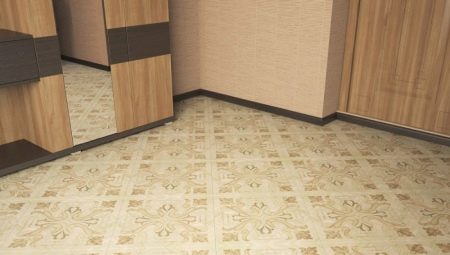The corridor among all the rooms of the apartment is under the most severe load - all visitors inevitably pass through it, including the owners who regularly cross it back and forth, and all the dirt first of all gets here. For this reason, experts advise choosing the most resistant finishing materials in every sense for the entrance hall, able to withstand abrasion for years, not afraid of mechanical shock and caustic chemistry, and, of course, attractively looking, because this is the face of the home. More and more people decide to give preference to a tile.
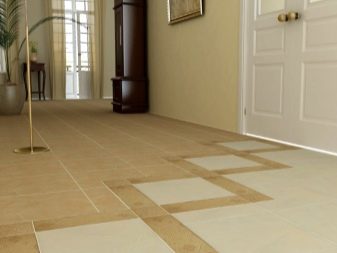
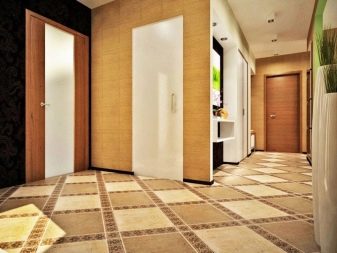
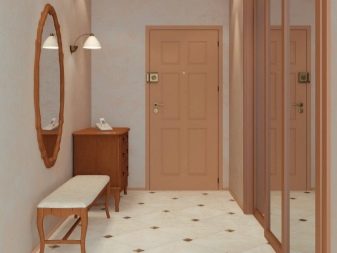
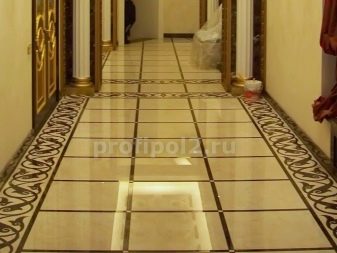
Features
When considering the purchase of just such a cladding in the hallway, you should objectively evaluate how much it will fit into the interior and whether it will be sufficiently justified in terms of operation. So that you don’t miss anything, we have specially gathered the potential advantages and disadvantages of the tiled floor. Let's start with a list of positive qualities.
- Strength and durability. Tile is considered one of the most resistant and reliable materials, its service life is usually estimated at several decades. In a corridor, the load on it will be higher, but if you select the appropriate type of material, you can not do repairs for a long time.
- Fire resistance. Regardless of what material the tile is made of, it certainly does not burn.Recently, our fellow citizens are increasingly refusing central heating in favor of underfloor heating systems, and for this design it is very desirable that the floor be made of non-combustible material.
- Ease of care. The tile is good in that there are practically no pores in its structure, and therefore it does not absorb any visible impurities or odors. If the stain has appeared, then it remains outside and it is quite easy to wipe it with a simple rag, and in which case the coating is not afraid of chemical cleaners. Due to the waterproof structure, such a floor also does not contribute to the growth of mold.
- Easy repair. The big advantage of floor tiles is its fragmentation. Even if one of the fragments is damaged or broken, this does not mean that you have to completely change the entire floor in the hallway - you can get a spare element from old stocks and install it instead of the damaged one.
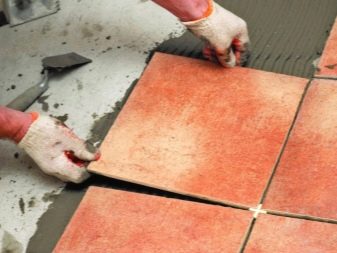

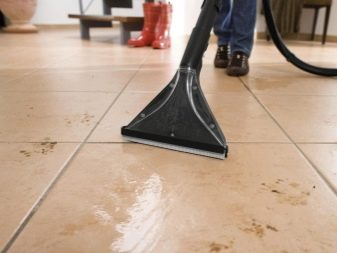
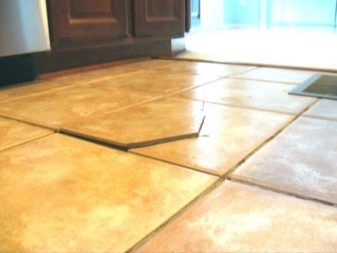
Unfortunately, no building material in the world is perfect. Tiles also have their drawbacks..
- Many consumers want to further brighten the corridor with glossy floor tiles, but its use is undesirable, because it has a high slip rate. In order to avoid injuries, it is better to give preference to matte solutions.
- Tiles are often praised for not being contaminated for a long time, but everything is relative, depending on which variety to choose. So, on light flooring in the corridor, fine debris and dirt will be perfectly visible, and a relief coating will help to accumulate unwanted elements in the cavities where the rag does not reach. Accordingly, in the hallway, such cladding options should be avoided.
- The tile itself cools down very quickly and almost always stays cool, moreover, the corridor is always shaded, does not get warm by the sun and does not have its own radiator batteries. If the owners are used to walking around the apartment barefoot, they will either have to give up this habit even within the hallway, or get used to the constant feeling of cold.
- Tile is not a finish option that provides good sound insulation, and if you also wear heavy shoes, the neighbors will not be happy with your choice of flooring.
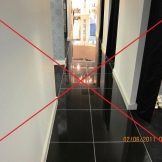

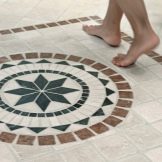

Species overview
Given the installation on the floor, and even in the hallway - where the load will definitely not be light - tile should have improved characteristics in terms of stability and durability. In fact, only three main types of such cladding are suitable for use in the described conditions.
- Classic ceramic tile almost completely consists of ordinary burnt clay. This is an old technology that does not require any special resources for production, because it is this kind of tile that should be considered the cheapest.
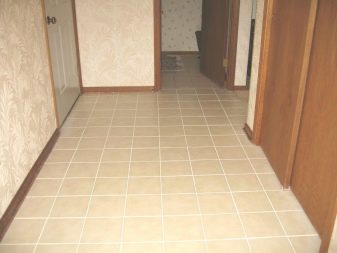
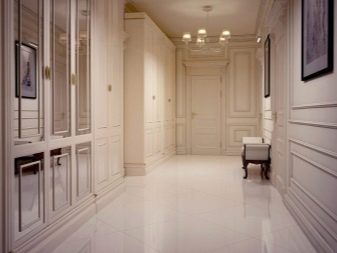
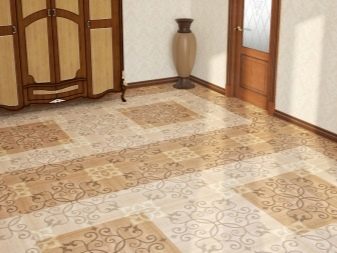
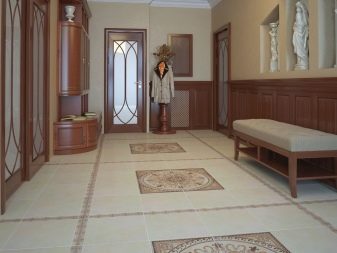
The advantages include color stability, but today there are much more durable alternatives to the old tile.
- Porcelain Tiles - This is all the same clay as a basis, but with the addition of granite chips. Due to the special pressing technology, the resulting material is approximately equal to natural granite in strength, which means it is much more reliable and durable than tile, and it passes water to an even lesser extent. Moreover, in terms of design, it quite often plausibly imitates just real granite.
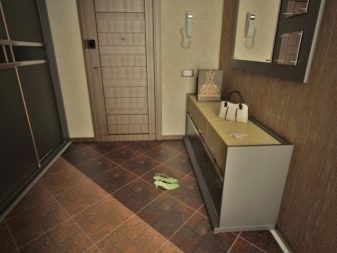
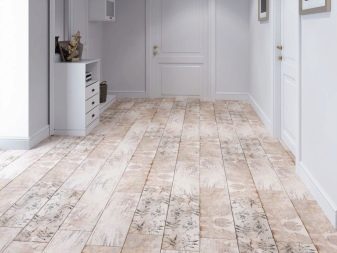
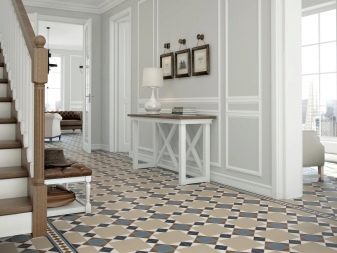
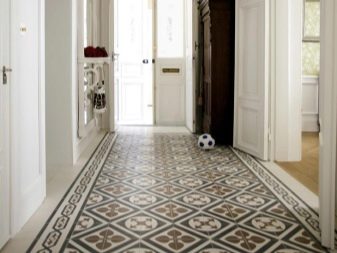
- Quartz Vinyl Tile is the result of crossing natural and artificial materials - quartz sand here is bound by polyvinyl chloride. In fact, this is an artificial stone that is cheaper than natural, but in terms of durability and resistance to wiping, in some cases it can even give odds to its natural counterpart.
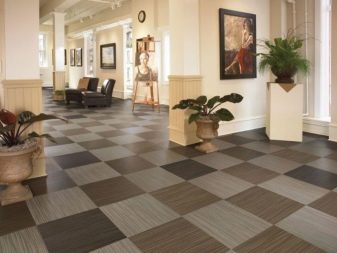
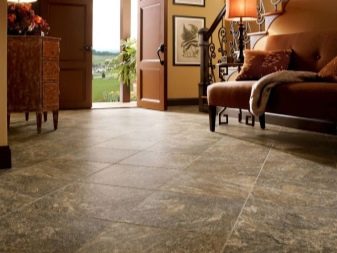
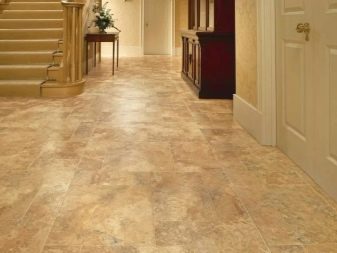
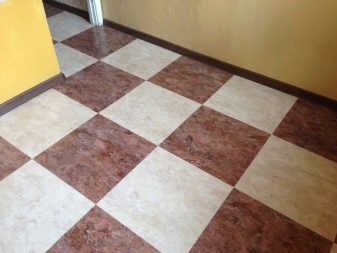
A variety of shapes and sizes
Modern manufacturers offer the consumer a choice of products in completely different shapes and sizes.Dimensions matter - the larger each individual fragment, the easier and faster it will be to tile the corridor floor. Moreover, there is an inverse pattern - in pursuit of large tiles, you should focus on the fact that the size of the room is a multiple of the size of the tile, otherwise cropping will take a lot of time and effort, and even turn a significant part of the finishing material into waste.
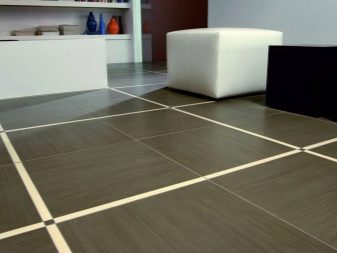
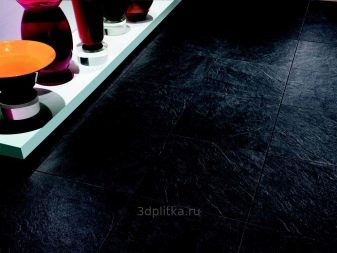
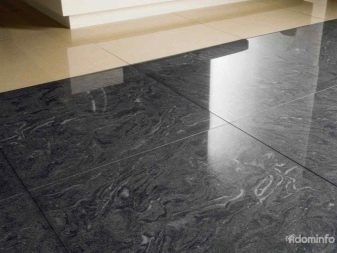

Most often, tiles of a conditional average size are chosen, since a large one gives too much garbage, and a small mosaic in a spacious corridor will seem out of place.
Another selection criterion is form of products. Classic considered squareable to easily fit into a typical rectangular room, but also fragments elongated also in demand. With their help, by the way, you can influence the visual perception of the room by laying the tile with a shorter end to the wall that you would like to extend. At the same time, more original geometric solutions come across, for example, hexagonsfrom which you can put "honeycombs".
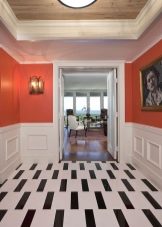
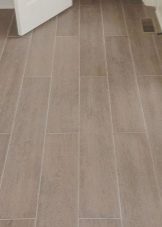
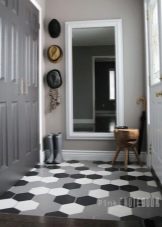
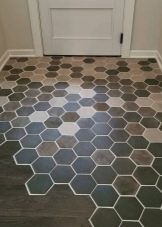
Design options
The corridor is that part of the apartment that absolutely everyone will see, even if they are not guests, but just a person who for some reason has called the doorbell. Since your own reputation must be maintained at a stable high level, when choosing a floor finish for the hallway, you can not ignore such an aspect as design.
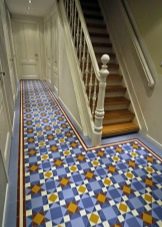
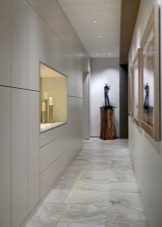

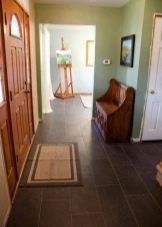
Color palette
One of the most important selection criteria is the color of the coating - it is important that it harmonizes with the design of the room as a whole and does not interfere with its adequate perception. You can use any monophonic option, but more often the tile of the following colors is used.
- White. Here the choice is difficult: on the one hand, a brilliant white gloss would not interfere with a room that is usually not spoiled by its own windows, on the other hand, it is too slippery and traumatic. In addition, dirt brought from the street will be visible on any light flooring in the corridor.
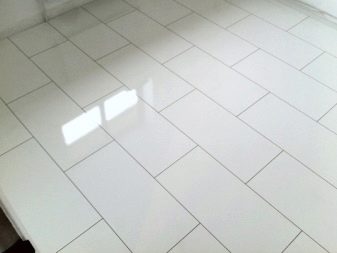
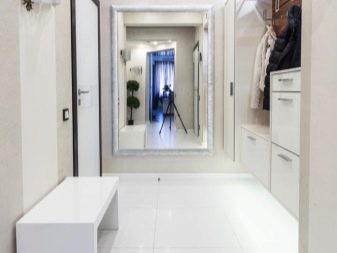
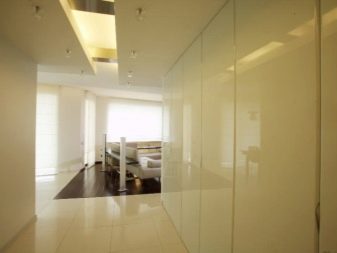
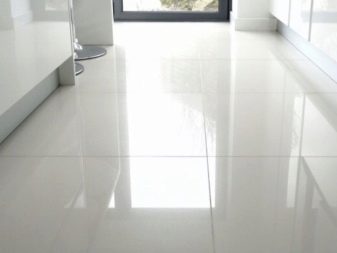
- The black. The opposite of white is also not without contradictions: on the one hand, such a design looks very elegant, on the other, damage is clearly visible on it, and a visual narrowing of the space is inevitable, which is not always good. Given all this, black tiles are usually used in combination with white, laying out a characteristic chess pattern.

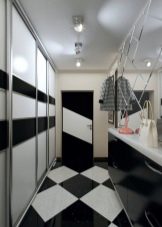
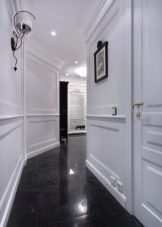
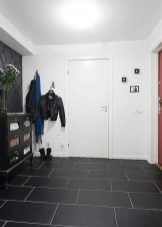
- Grey. The golden mean is the most practical in the case of the hallway - scratches and dirt are not so noticeable on it, while it does not reduce the space visually.
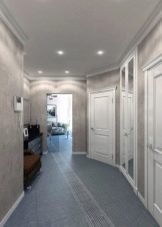
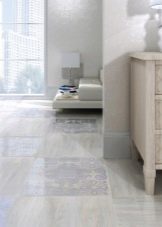
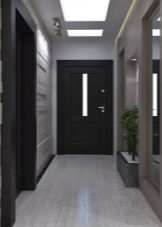
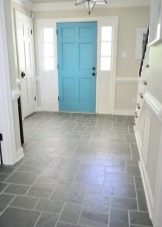
- Beige. Another option that allows you to level out the main disadvantages of a white or black coating, and at the same time has a warmer tone. This is an inconspicuous floor - it does not strike the eye, neatly complementing all other interior details.
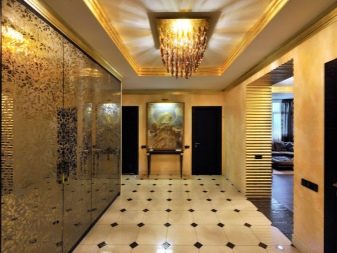

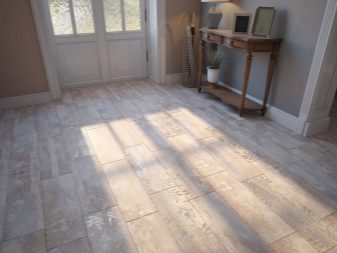
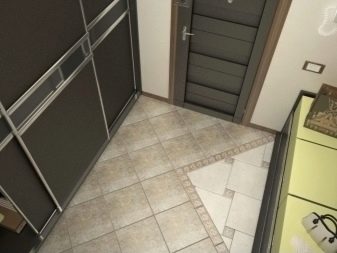
- Bright tones. Colorful solutions in the form of blue or red tiles are relatively rare, but in general they are difficult to reconcile with the overall interior design, because such a floor is rarely monophonic. In order not to tire the eyes, the lining is usually combined with white in a variety of patterns, or at least muted shades are chosen.
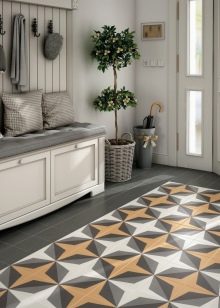
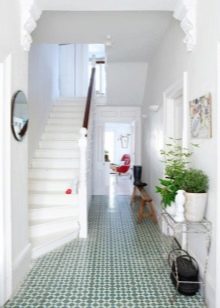

Patterns and drawings
Modern industrial technologies allow tile manufacturers to meet the consumer's needs in terms of the range of available patterns. They can be anything you like, so it’s not at all necessary to choose strict, one-color solutions.
A striking example of how this can be used in modern design is layout method called patchwork. Translated from English, this word means "something sewn from shreds," therefore, tiles are used for cladding at random: it matches either the color scheme of the ornament or the ornament itself, but not both of these characteristics at once. You don’t need to adhere to any pattern layout scheme - on the contrary, Avoid it by laying out the tiles in the most random order.

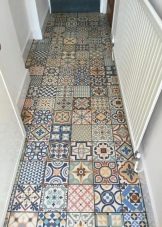
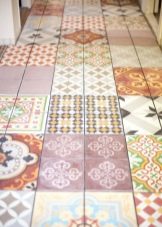
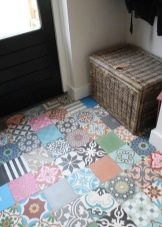
It turns out stylish and very homely, and most importantly - unique.
Very popular coatings imitating natural wood, be it parquet or laminate. In the conditions of the corridor, such real material would hardly have lasted long enough, and so you have the opportunity to choose the finish for your own aesthetic reasons, without thinking about the practicality of such a solution. Manufacturers are not too lazy to offer different shades of wood, including imitation of aged cladding.
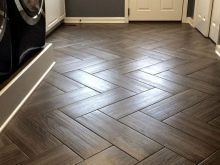

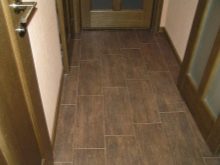
Naturally in demand and marble tiles, especially since its composition can really include stone crumbs. As in the case of imitation wood, such a design solution looks very stylish and expensive, and although theoretically you could really line the hallway with natural stone, the tile will cost much cheaper.
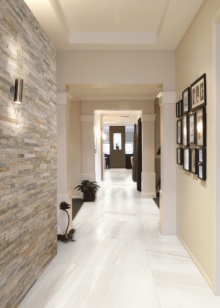
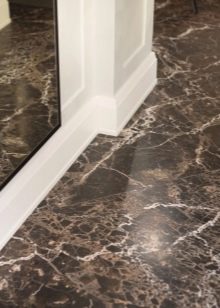
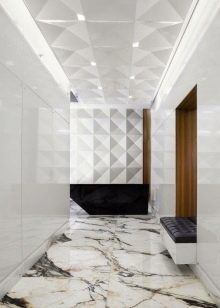
As in the case of wood, there is the ability to choose a shade.
Texture
Since tile manufacturers undertake to imitate some natural materials, it would be naive to believe that in pursuit of this they are limited to imitation of only one shade. In fact, modern technologies also cope with the creation of a certain texture. We will not discuss how the result is similar to natural stone or wood. Let's just say that the surface of the tile can be either smooth or rough.
A smooth texture has an obvious advantage in the sense that it does not imply hard-to-reach places - by walking along it with an ordinary rag, the owners will achieve perfect cleanliness without unnecessary efforts. For room hygiene, this is a big plus, but a perfectly flat surface is often excessively shiny and dazzles, and it is also slippery, which is fraught with injury.
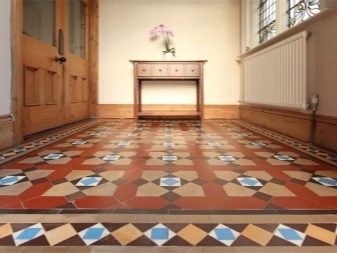
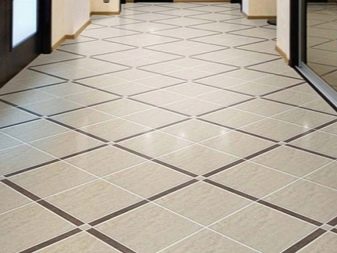


Accordingly, a rough surface has completely opposite advantages and disadvantages. Most often, this is a matte tile on which it is difficult to slip - small relief projections, which you may not notice from your height, do not allow shoes to slip.
Nevertheless, these same protrusions and depressions create a certain problem - dirt and bacteria can accumulate in all these features of the relief, which can be difficult to extract from there. On a rough tile, the dirt may not be so noticeable at the first moment, but in fact the finish gets dirty a little faster than the glossy one and it needs to be removed more often.
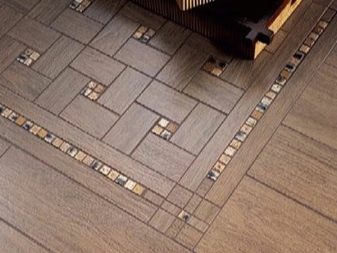
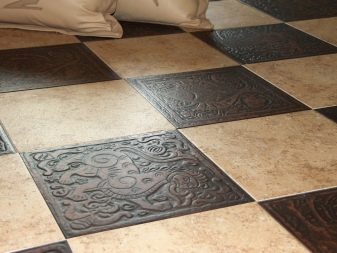
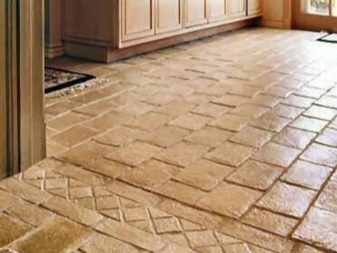
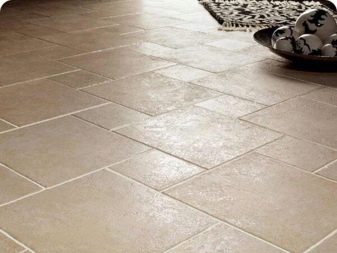
However, in the pursuit of the naturalness of the cladding, which imitates natural materials, many buyers still get just this kind.
Criterias of choice
Consider a few more secrets, the knowledge of which will not hinder the selection process. First of all, the tile is selected as a material that can withstand wiping, but at the same time the tiles are different and you should not think that any tile coating is the same in this regard.
Specialists purposefully developed a special scale by which you can determine how quickly the floor tiles wear out, and the corresponding marking must necessarily be present on the package. Given that in the corridor passability is the highest in the scale of the entire apartment, it is worth choosing products of 3-4 classes of abrasion.




Meanwhile, no matter how hard you try with choosing the least wiped tile, eternal finishing materials do not exist, because the tiles sooner or later wear out. The task of a good owner is to make the natural process of tile aging less eye-catching, because professional designers often use a somewhat illogical move - they tiled the floor of the corridor with a tile that originally imitates an old coating.
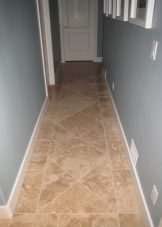
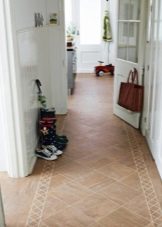
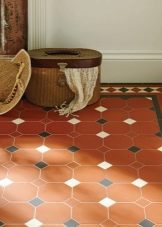
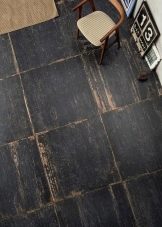
If the manufacturer managed to achieve the effect when styling for the old finish does not interfere with the understanding that the lining is actually new, then in the case of real wear, a person will still perceive it only as an element of a thoughtful design.
For the same reason experts discourage choosing tiles of light shades and with complex patterns for the corridor - a much darker palette with obscure, blurry stripes will be much more durable. No matter how intensively such a coating is wiped, it will always seem to an outsider who did not have the opportunity to constantly monitor the state of the floor that the coating was originally conceived exactly as it looks now and that all visible scuffs are a design feature.
A separate discussion is about choosing a tile manufacturer. In most cases, consumers evaluate a supplier by the reliability and durability of its products, verified by millions of other consumers, but in the case of tiles it is worth paying attention to one more subtlety - degree of rigor of following the geometry. Unfortunately, even among the top brands, not everyone is able to achieve the perfect correctness of the shape of individual elements, because of which the seams can be uneven.
If you also chose a large tile, slight bends at half a degree will be clearly visible, especially when designed with minimal seam width. You can try to avoid this problem in two ways: either by carefully studying the reviews and finding a company that has not been criticized for the “three in geometry”, or by choosing a grout for the seams to match the tile itself so that one does not stand out from the other.
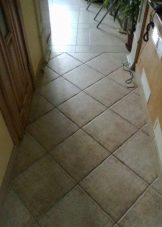

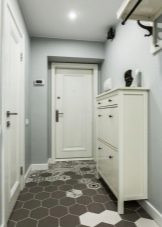
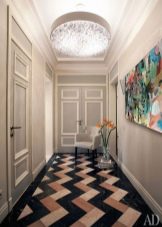
Styling methods
There are four main layout methods, and although the imagination of designers is not limited to them, nevertheless, you most likely will like one of them.
- Classic layout doesn't look for complicated paths - rectangular tiles are laid out in even rows along the walls. It looks simple and at the same time thoroughly and solidly, in terms of saving tiles and time, this is the best option.
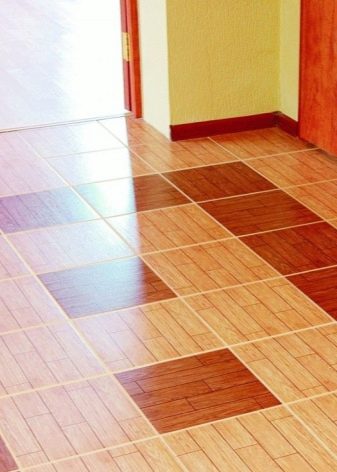
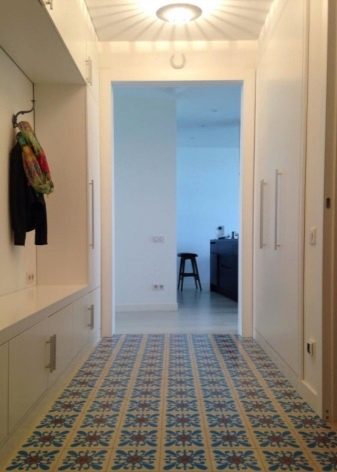
- Diagonal layout - this is the same classic, but at an angle of 45 degrees with respect to the walls, so that each fragment does not appear as a rectangle, but as a rhombus. With the help of such a trick, it is possible to make the hall more interesting aesthetically, visually expand its borders and even hide some unevenness of the substrate, but here the consumption of materials and time is much higher.
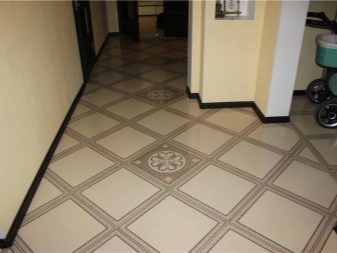

- The calculation of the "runaway" resembles the classical one in the sense that the rows are located at right angles to the walls, but at the same time there is a certain shift in them relative to each other. Something similar can be seen in the brickwork, where row dressing is needed, and this decorating technique is used just to simulate natural materials.
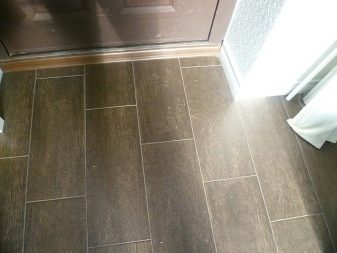
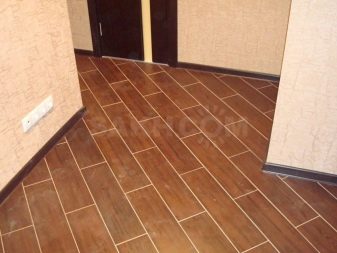
- Herringbone layout Usually relevant for simulating parquet, when each individual fragment is a narrow and very elongated rectangle. This solution looks both simple and original. In this case, relatively little waste remains.
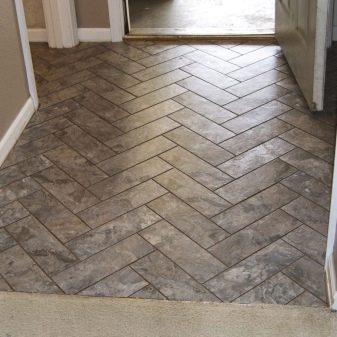
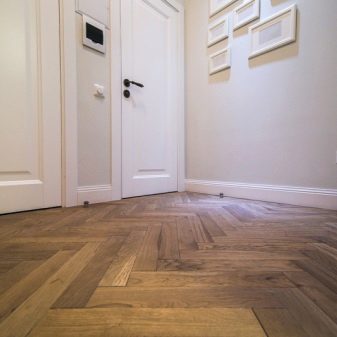
When deciding on the installation method, it is worth remembering that you do not have to strictly adhere to any one selected scheme, especially if the corridor has a shape that is significantly different from the classical rectangle. So, in a narrow vestibule at the entrance you can choose one of the above layout methods, and in the central part lay out a full panel of fine mosaics - such a combination will be definitely remembered by the guests and will tell a lot about your aesthetic taste.
At the same time, you can combine ideas at your own discretion and in any combinations, if only it would be beautiful.
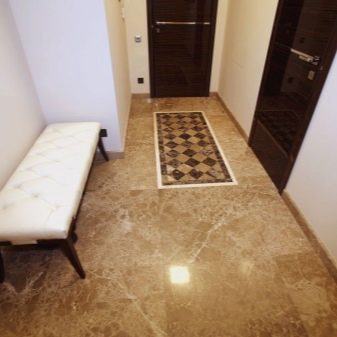
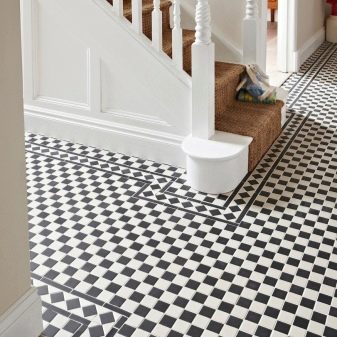
Beautiful examples
Even a tile with a simple black-and-white pattern can take part in creating the perfect interior of a hallway, especially if you use it not by itself, but in combination with a frame from another tile in the same colors. The result looks very aristocratic and well remembered. The designer deserved all praises: focusing on the classic black and white color scheme, he successfully moved away from banalism like a chessboard.

This example clearly shows that for a good tiler master the number of layout options is by no means limited to four. He is capable of more. As a result the complex pattern of the corridor floor resembles a laminateHowever, in this case, the replacement of the flooring will still be needed very soon, because a good tile is able to serve the owners for decades.

If you have always dreamed about parquet in the hallway, but objectively understand that this expensive cladding will not last long, choose a tiled imitation of parquet boards. For skeptics who do not believe that this may look believable - this is an example showing how things could be. In addition, it is also successful demonstration of a combination of two ways of laying out within the same room.
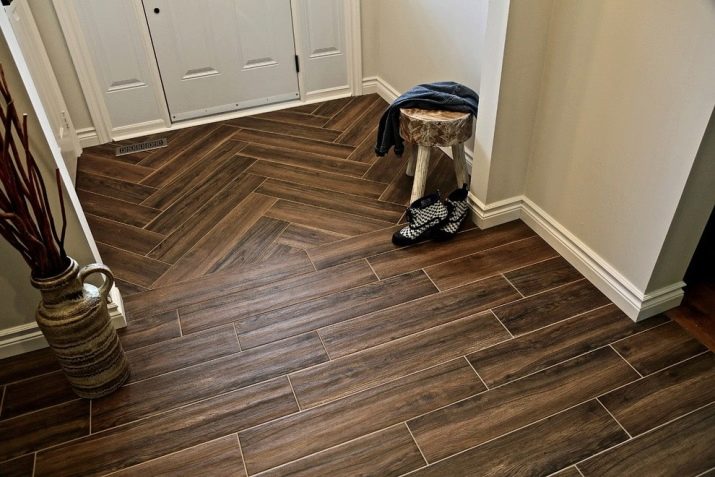
For errors in laying tiles, see the next video.
